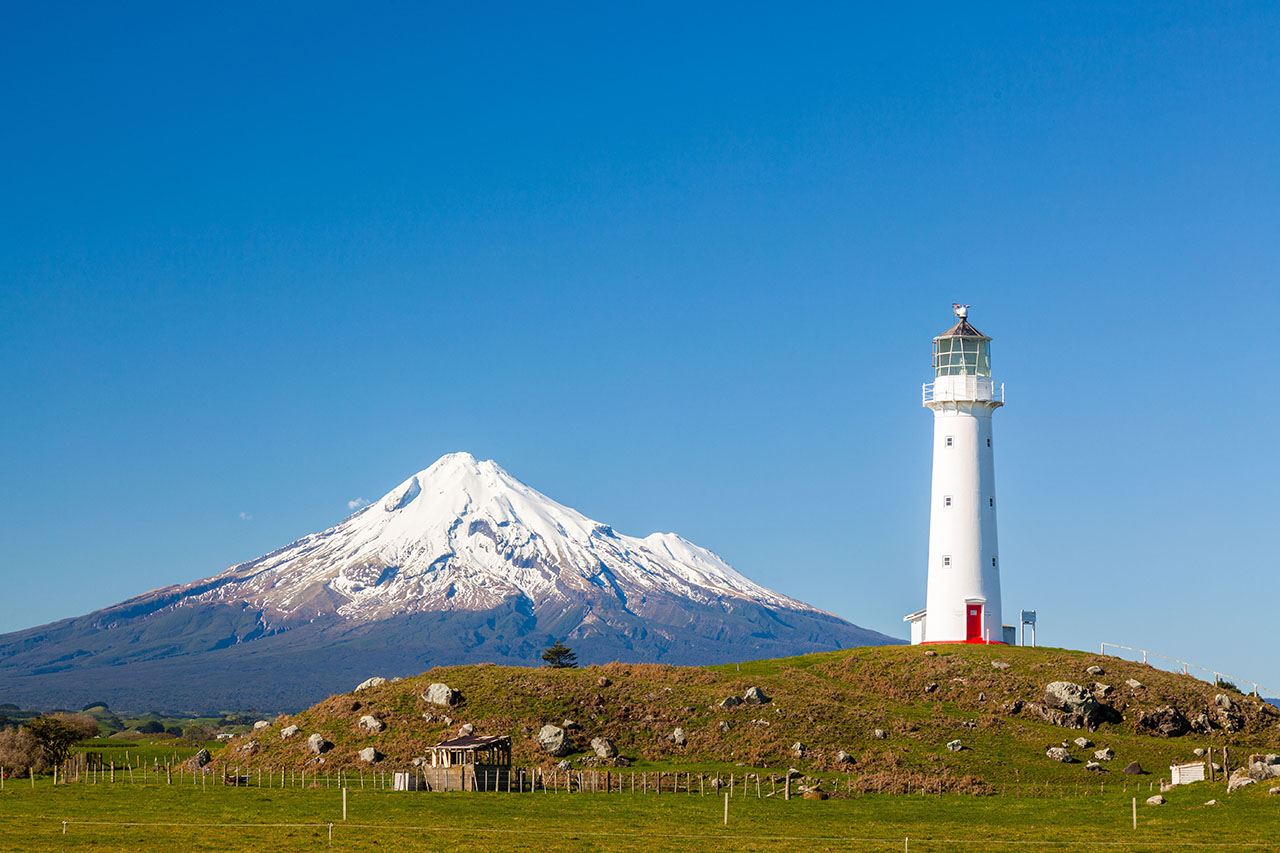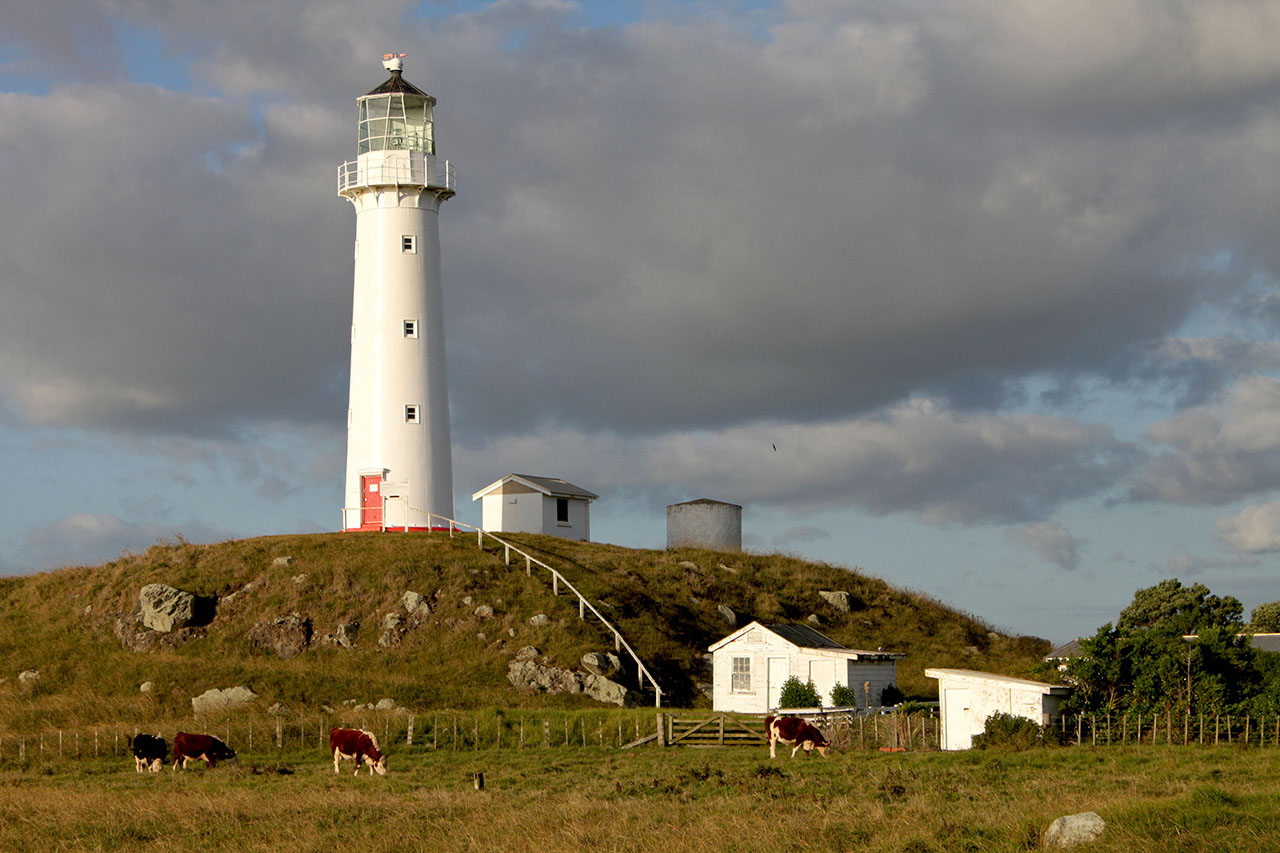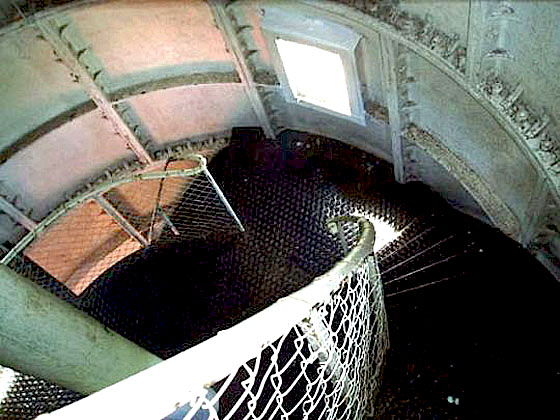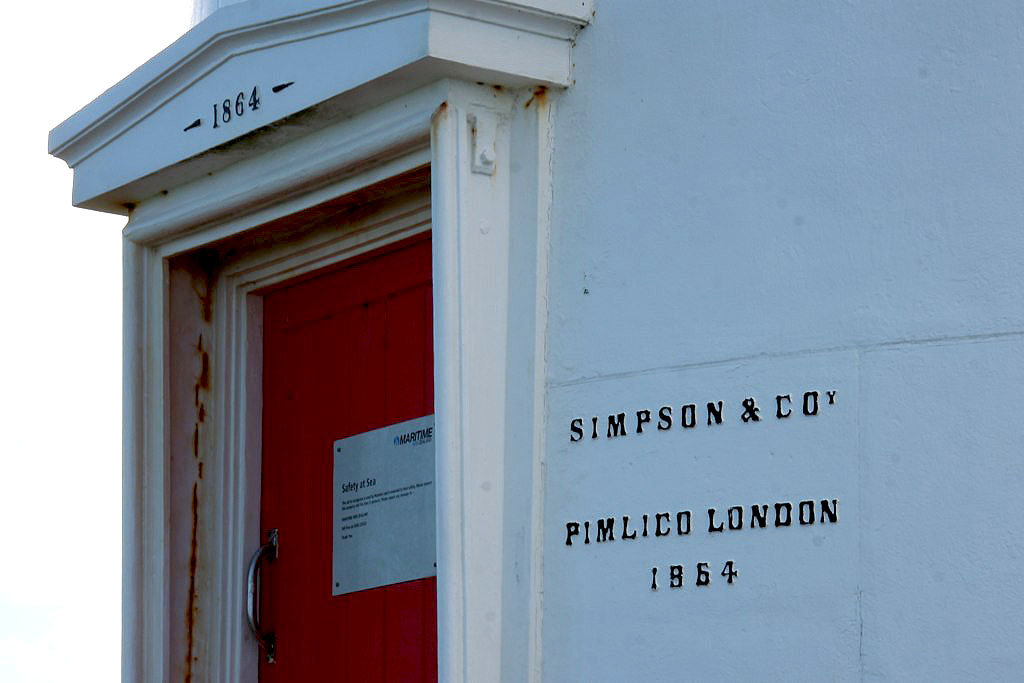Cape Egmont lighthouse has its origins in the construction of a lighthouse on Mana Island in 1864-65. Built to light the western margins of Cook Strait, it was a sister light to the Tiri Tiri Matangi light and was one of the first lights constructed in New Zealand. Within a decade, its position was being reconsidered; through being mistaken for the Pencarrow light it was thought responsible for several shipwrecks. The City of Newcastle and Cyrus were two ships thought to have foundered as a result of this confusion. As a result, in 1874 the decision was made to move the light to Cape Egmont, which had been earmarked for a light from the 1860s but the New Zealand Wars had intervened. It was not until the Brothers Island lighthouse (on the other side of Cook Strait) was completed in 1877 that the light was extinguished. Remnants of the Mana Island lighthouse foundations remain on site. With the light no longer in use it was ready for removal but, again, conflict between Maori and the government intervened. The dispute surrounding the opening up of the confiscated Waimate plain, inland from Cape Egmont in Taranaki, which culminated in the invasion of Parihaka in 1881, led to the stationing of the Armed Constabulary in the region. This allowed work in the lighthouse to proceed and the light at Mana was dismantled and sections transported by the government steamer Hinemoa to Cape Egmont. Despite its site on low-lying land, Cape Egmont had its fair share of construction issues. Existing bridges had to be strengthened to carry the large loads, and large boulders were removed from some of the streams. The road was so soft that bullock teams could only drag three tons at a time. The presence of the Armed Constabulary created its own issues. Some troops slept on a floor of the lighthouse as it was being erected, much to the irritation of the keepers, who had to knock to enter their own building. The Armed Constabulary insisted that special protective measures for the building were necessary. The lighthouse was given a wrought-iron door and shutters (now gone), flax had to be cleared from the reserve and the boundary fenced by a ditch, and a bank planted with gorse. The troops stayed on after the building's completion and finally left in mid-February 1882. Cape Egmont lighthouse was built for a cost of £3,353.17.11 and lit for the first time on 1 August 1881. It was initially, and for some time thereafter, staffed by two keepers. Outbuildings, including houses, were constructed at the same time as the lighthouse itself. After the invasion of Parihaka, Maori resistance ended and Pakeha farmers took over the surrounding land for farming. As roads improved and the local population grew Cape Egmont turned into one of the most accessible lighthouses in New Zealand. It was a popular posting from that point of view. In 1898 the station was linked to the telegraph system and in 1906 or 1907 a telephone linked to New Plymouth was placed in the tower, although it only ran after 5pm. The station was reduced to one keeper in 1929 when a new automatic, revolving lens with a fixed incandescent acetylene burner and sun-valve was installed. It was the most up-to-date light in the country. In 1951 the light was automated by diesel generator (connected to mains power the following year ) and the keeper removed. It had been intended that a keeper would maintain the station and provide weather reports, but staff shortages resulted in his transfer to another station. Five years later, on 14 July 1956, the vessel Calm grounded on rocks near Cape Egmont during a storm. The government established a commission of inquiry into the grounding and, as a result, a permanent keeping position was reinstated. As the 20th century wore on, tourists became a more common site at accessible lights and from the 1960s onwards numbers of tourists began to be kept at popular lighthouses. Cape Egmont was no exception and records kept between 1978 and 1984 reveal that 5341 people visited the light. In 1982, the lighthouse was listed on the South Taranaki District Council's district scheme. In 1986 the light was fully automated. The last lighthouse keeper, Bryan Richards, together with his wife Janet, bought the remaining keeper's house and retired there. The New Zealand Historic Places Trust had discussed negotiating an honorarium for Mr. Richards, who wanted to oversee the tower and show visitors over. To what extent this ever formally happened is not certain. As a listed historic building, Cape Egmont's security was given considerable attention before the doors were shut. It remains a well known and popular lighthouse.




Location
List Entry Information
Overview
Detailed List Entry
Status
Listed
List Entry Status
Historic Place Category 2
Access
Private/No Public Access
List Number
820
Date Entered
12th December 2003
Date of Effect
12th December 2003
City/District Council
South Taranaki District
Region
Taranaki Region
Legal description
Pt. Sec 1 SO 12626 Blk XII Cape SD Lighthouse Reserve, NZ Gazette 1898, p. 1948
Location Description
Cape Orad, Pungarehu, Taranaki
Stay up to date with Heritage this month
